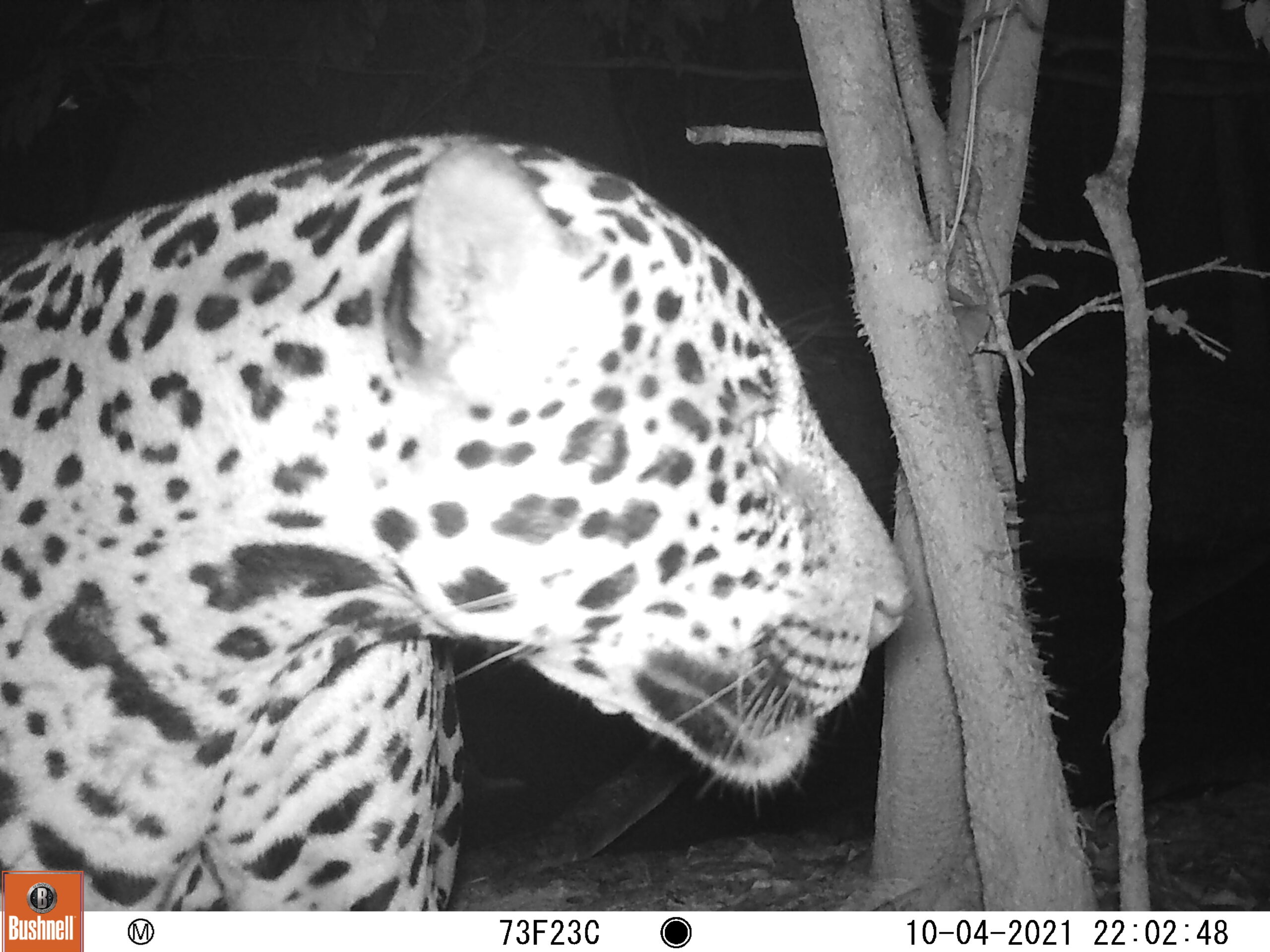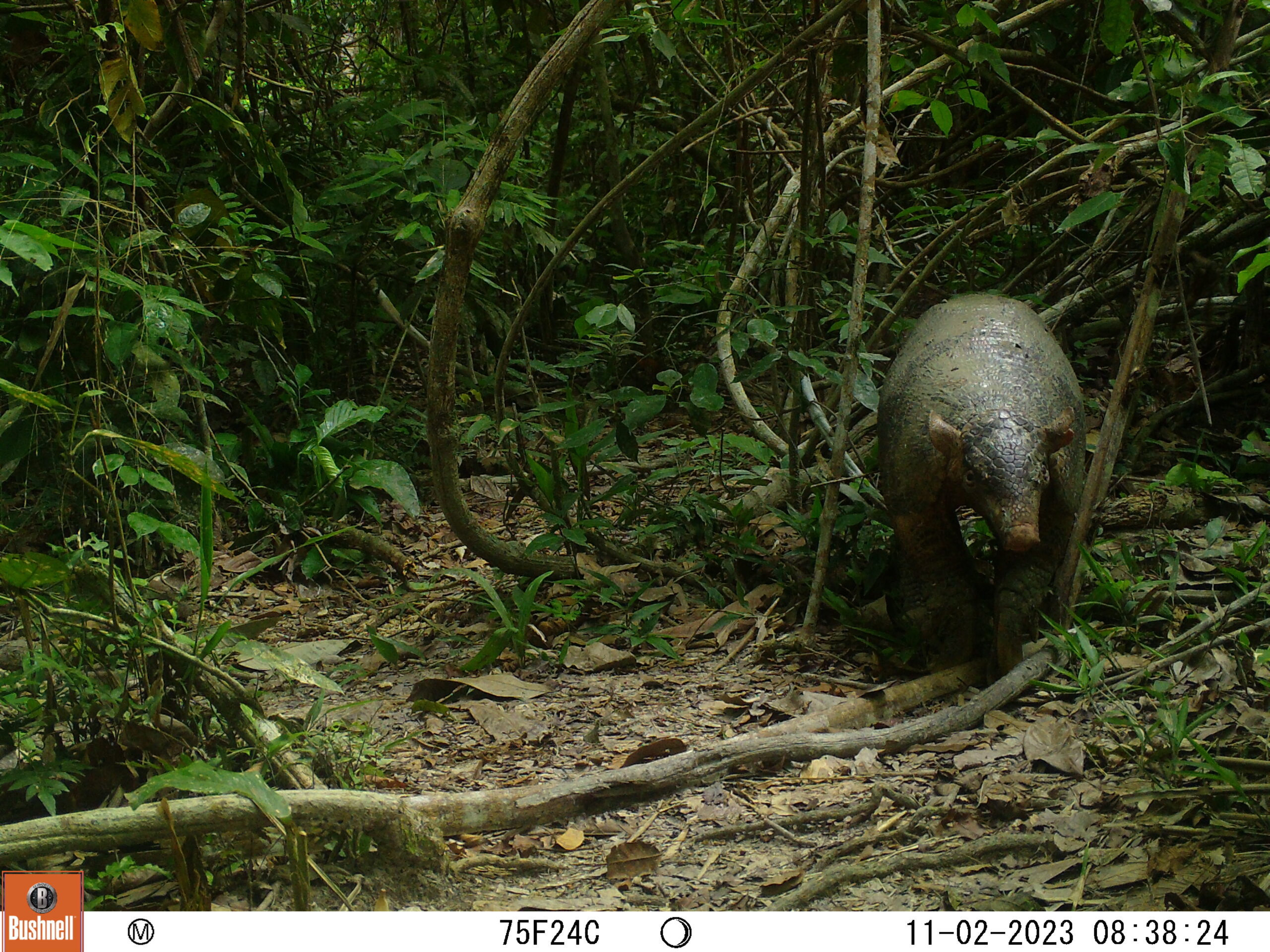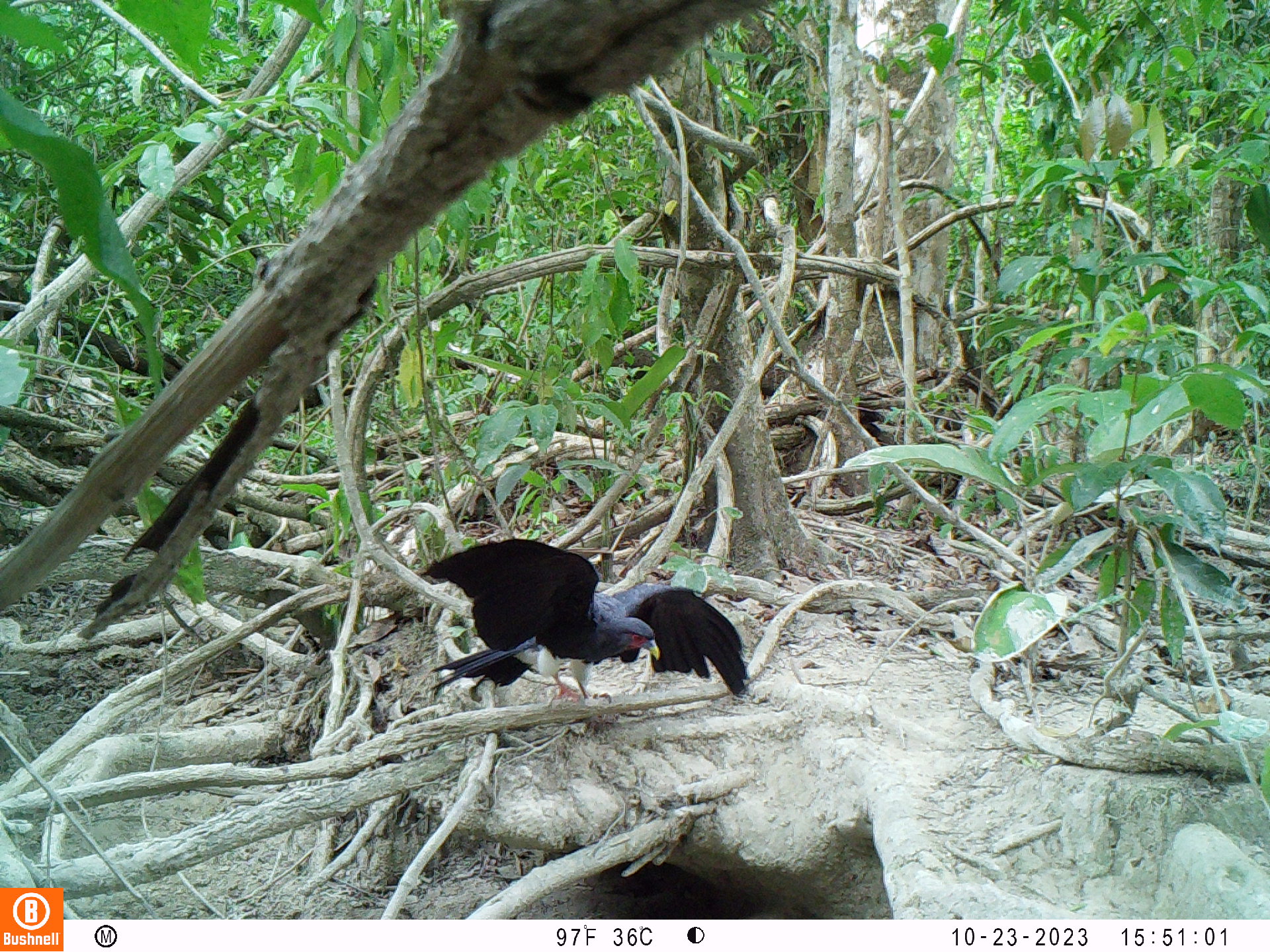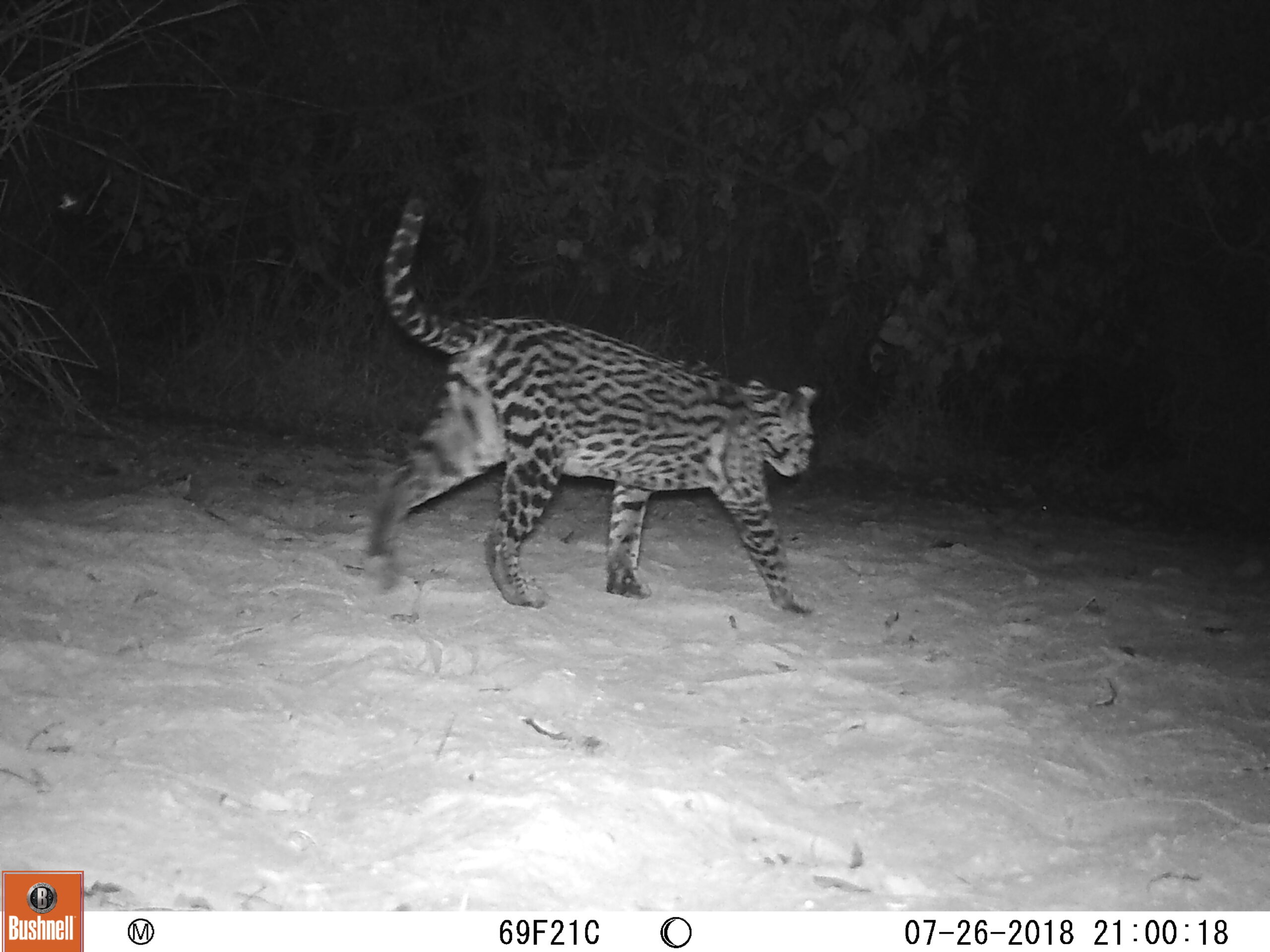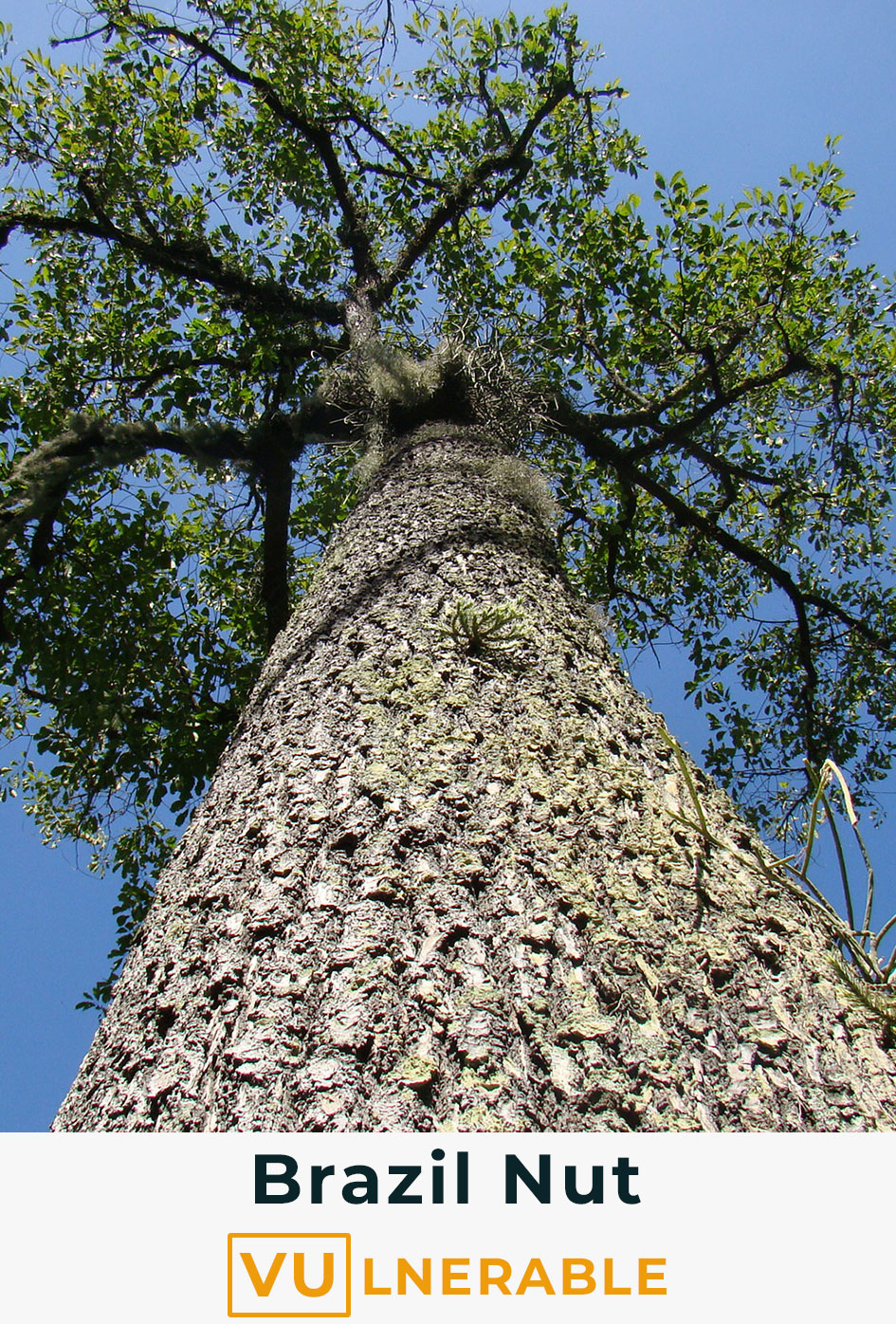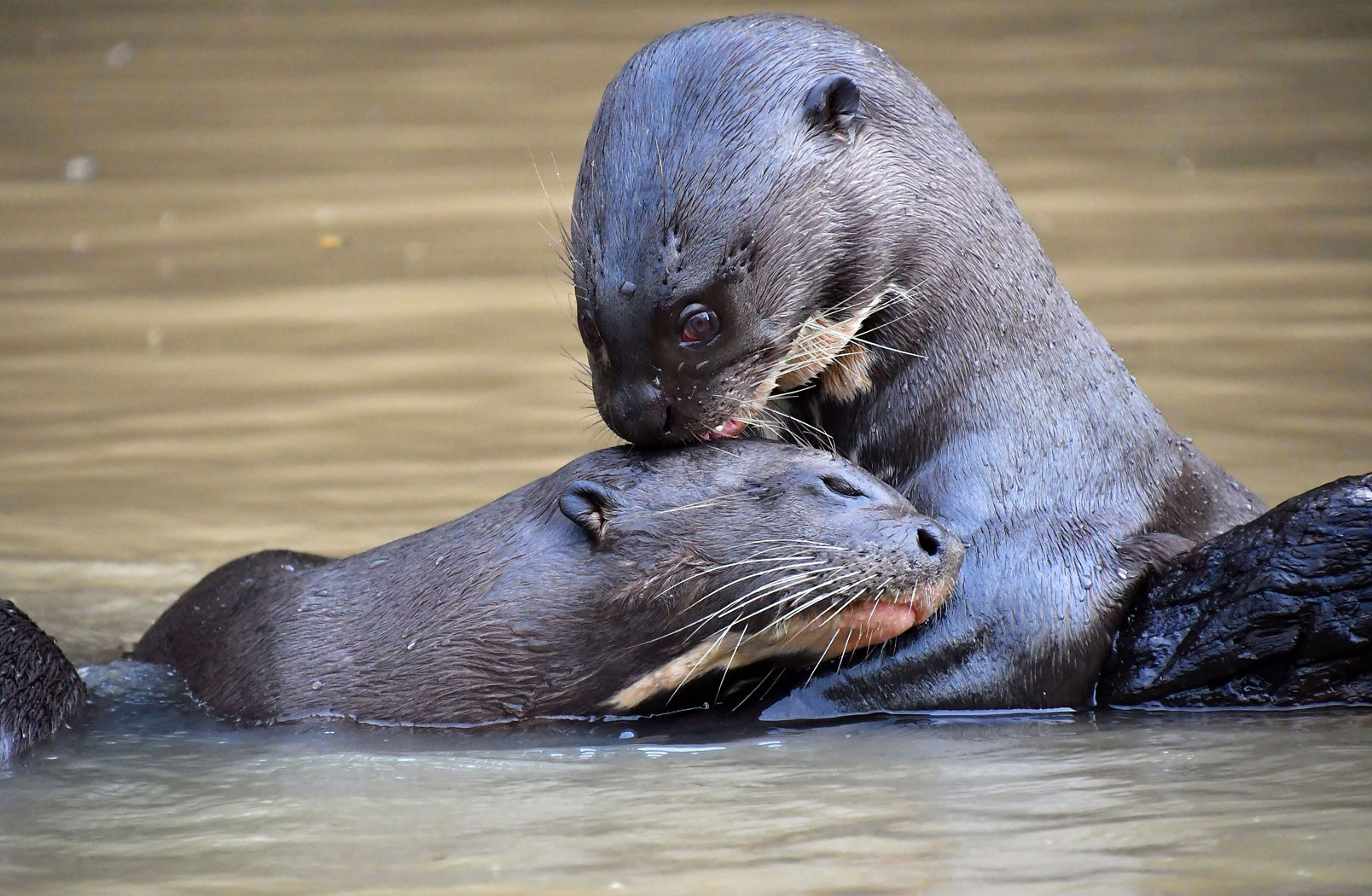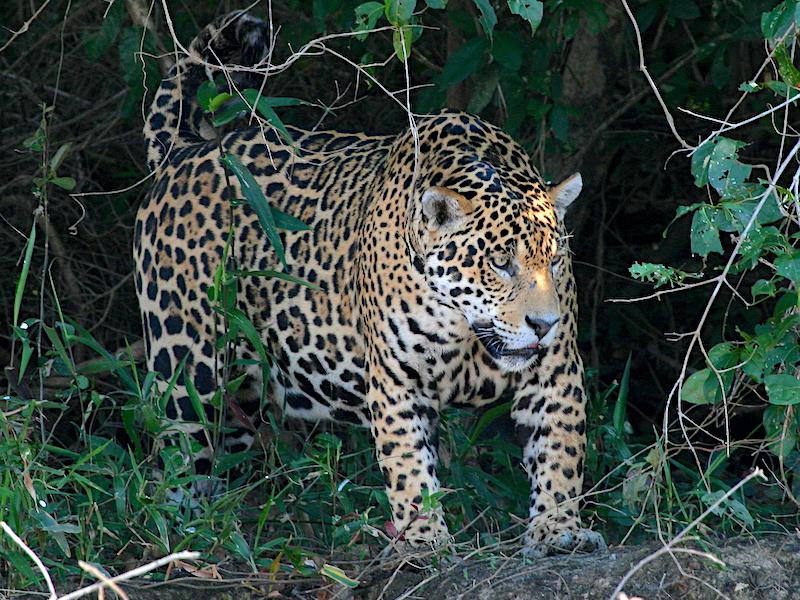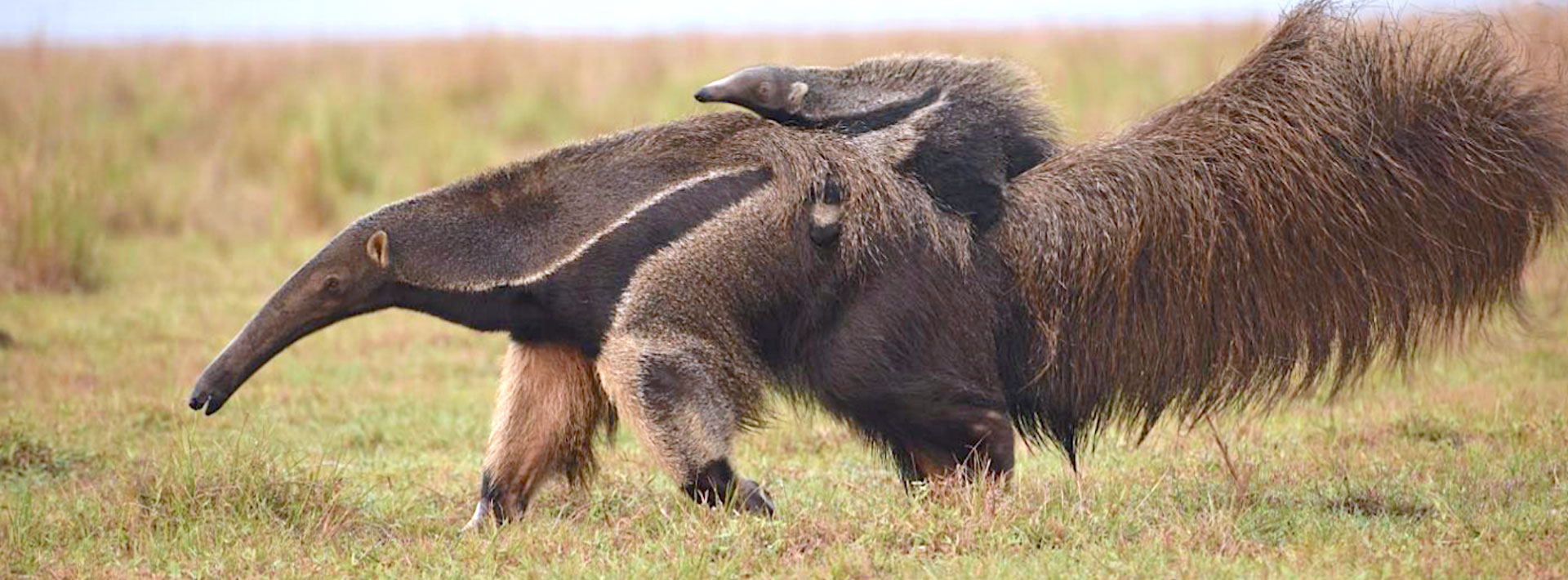Right at the frontier of industrial encroachment upon the southeastern Amazon lies the awe-inspiring expanse of Kayapo indigenous land, a sanctuary of rich biodiversity.
Shielded by the guardianship of the Kayapo people, this territory remains a bastion of pristine wilderness amidst encroaching development. Here, the lush rainforests teem with life, showcasing an astonishing array of flora and fauna that have thrived undisturbed for centuries. Amidst this natural splendor, some of the world’s most sensitive and endangered species find refuge, their presence a testament to the Kayapo’s unwavering dedication to preserving their ancestral home. As stewards of the land, the Kayapo exemplify the harmonious coexistence between humanity and the natural world, offering a beacon of hope for conservation efforts worldwide.
Strategically placed guard posts are the cornerstone of the territorial surveillance program of the Kayapo Project. Biome Conservation provides the Kayapo People the tools they need to ensure the protection of their constitutionally recognized territorial rights.
Right at the frontier of industrial encroachment upon the southeastern Amazon lies the awe-inspiring expanse of Kayapo indigenous land, a sanctuary of rich biodiversity.
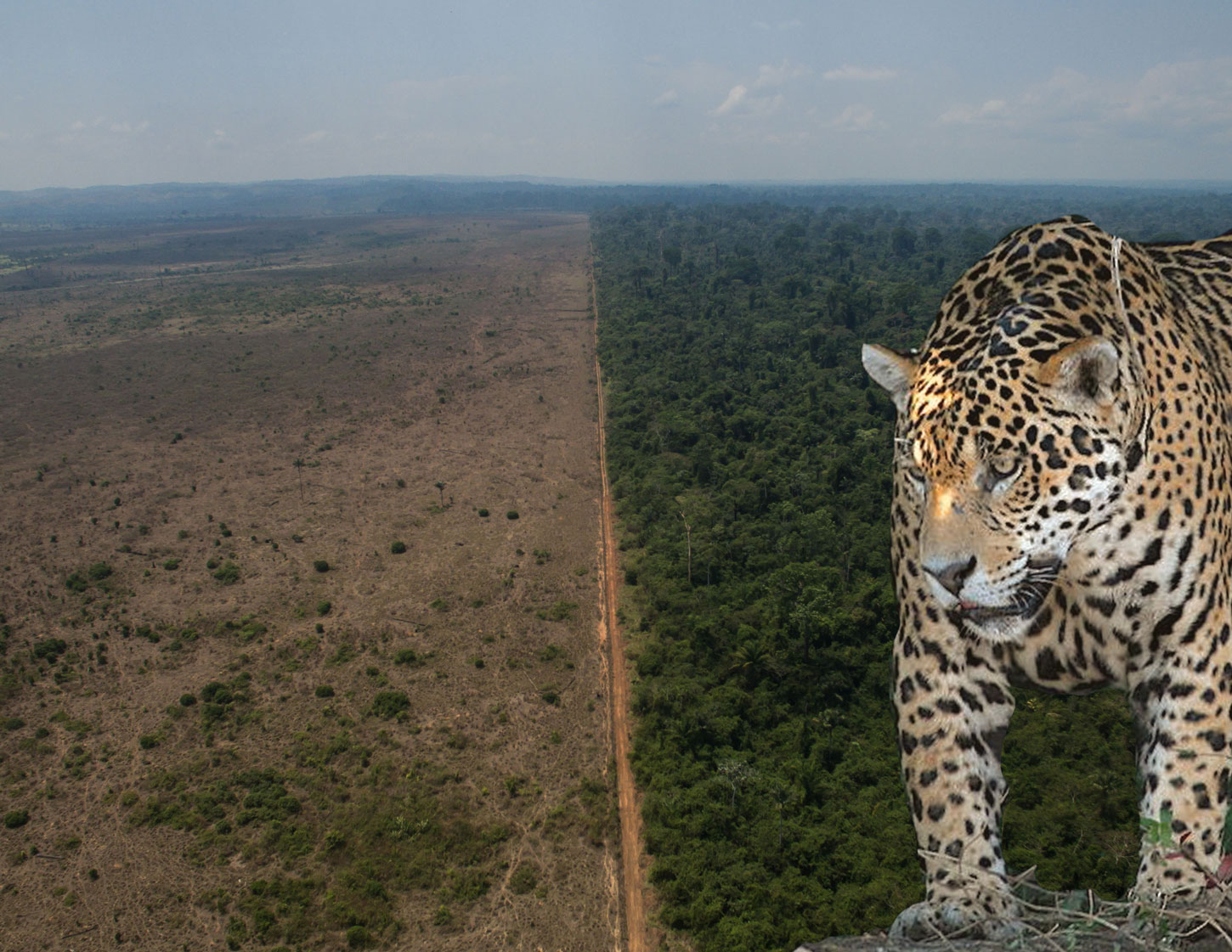
Shielded by the guardianship of the Kayapo people, this territory remains a bastion of pristine wilderness amidst encroaching development. Here, the lush rainforests teem with life, showcasing an astonishing array of flora and fauna that have thrived undisturbed for centuries. Amidst this natural splendor, some of the world’s most sensitive and endangered species find refuge, their presence a testament to the Kayapo’s unwavering dedication to preserving their ancestral home. As stewards of the land, the Kayapo exemplify the harmonious coexistence between humanity and the natural world, offering a beacon of hope for conservation efforts worldwide.
Photo: Roger Sargent Wildlife Photography
Photo: Roger Sargent Wildlife Photography

Photo: Kandukuru Nagarjun
Giant otters (Pteronura brasiliensis) are aptly named, as they can reach lengths of up to 6 feet (1.8 meters) and weigh as much as 75 pounds (34 kilograms). Despite their impressive size, they are highly social animals, often living in family groups of up to 20 individuals, and communicate through a variety of vocalizations and tactile gestures.
Giant otters confront a multitude of threats that imperil their survival. They face habitat loss, water pollution stemming from industrial and agricultural runoff, as well as chemical contamination associated with activities such as gold mining. Other reasons for their declining populations are the persistent menace of poaching due to the high value of their fur, and the detrimental impact of overfishing on their food sources. Thriving as a Giant Otter hinges on a delicate balance, reliant on the stability of the ecosystems beneath them and the overall health of river environments. Despite their extensive range, their population continues to dwindle. The thriving presence of these magnificent creatures within the Kayapo indigenous lands serves as a testament to the remarkable ability of the Kayapo people to safeguard their territory and foster conditions conducive to the flourishing of the otter population.
Giant otters are apex predators within aquatic environments and are considered keystone species for river systems in South America. They occupy a pivotal ecological niche, influencing the dynamics of their freshwater habitats. By regulating the populations of their prey species, they not only maintain the delicate balance of the ecosystem but also shape its overall structure and function.
This control exerted over prey populations is vital for preserving the intricate web of species interactions and ecological dynamics within the riverine habitat. Through their predation, giant otters help to prevent the overpopulation of certain prey species, which in turn prevents cascading effects on other trophic levels and ensures the health and stability of the entire ecosystem.
“Groups are highly cohesive: they hunt, mark their territories, sunbathe, and sleep together, with bonds constantly reinforced by mutual grooming and play. A giant otter family has much in common with a human family, which is why observing them over many years has something of the soap opera about it. There’s drama, bickering, unity in the face of a caiman threat, babysitting and shared feeding of the cubs, and, finally, offspring leaving home. If fate is kind, a breeding pair may stay together for up to 10 years.” – Jessica Groenendijk for Mongabay
Camera Traps
The Kayapo people are combining their deep ecological knowledge and tracking expertise with modern camera trap technology to study and protect the incredible wildlife of their forests. By capturing images and videos of the animals that thrive in their territory, they’re creating a detailed record of the rich biodiversity that surrounds them — from elusive jaguars to vibrant bird species.
Photo: John Meisner
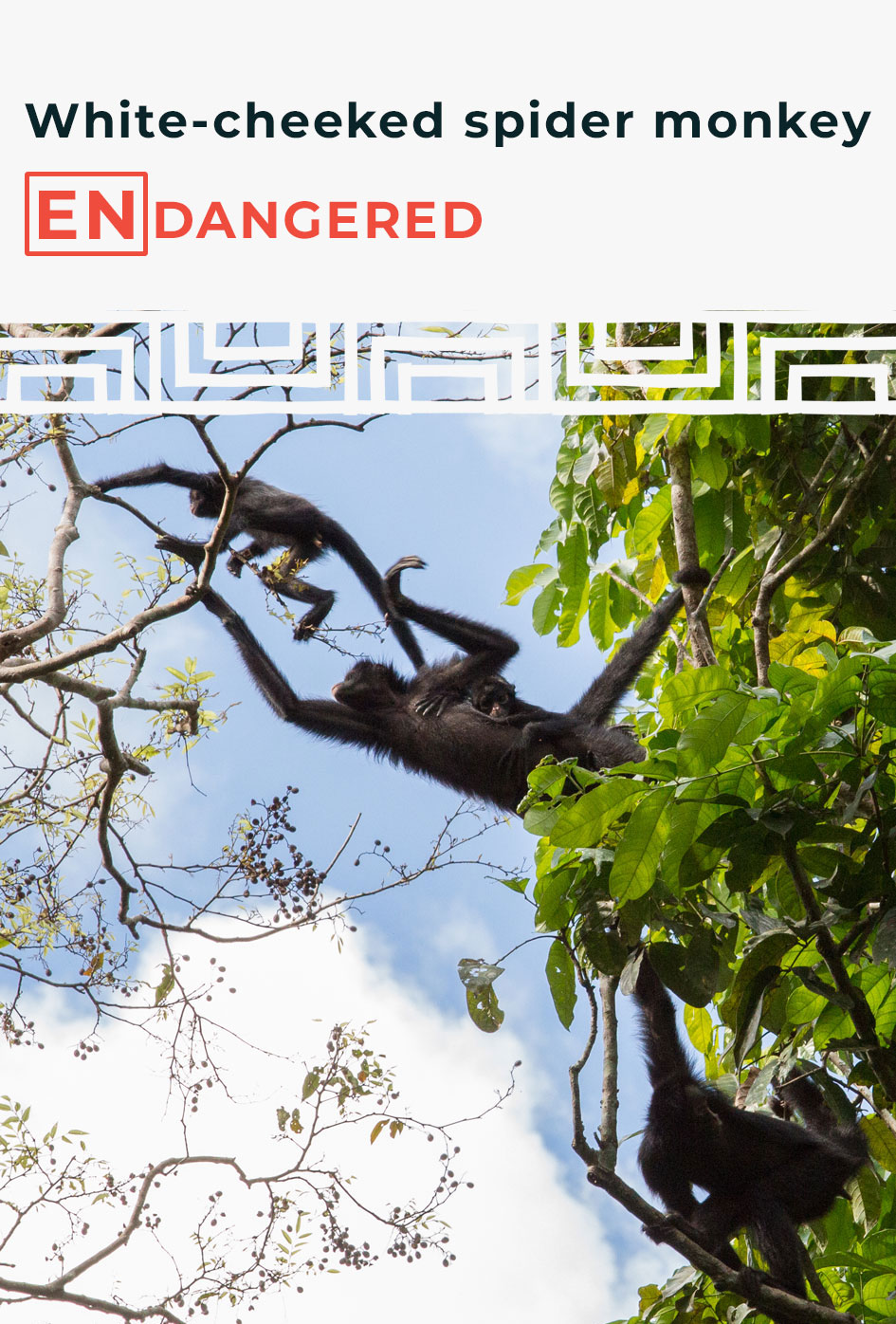
The white-cheeked spider monkey (Ateles marginatus) is a fascinating primate: extremely agile, very social, nurturing and an efficient seed dispenser. White-cheeked spider monkeys love munching on fruits and play a big role in spreading seeds around. A study found they scatter the seeds of 138 plant species, which is almost all of the fruits they eat!
These primates are highly arboreal, inhabiting dense, primary rainforests where they spend the majority of their time in the canopy. They exhibit complex social behaviors, living in cohesive groups and displaying strong bonds between individuals.
Deforestation, primarily driven by agricultural expansion and logging, poses a significant risk to these primates by reducing the availability of suitable habitat for foraging and nesting. Despite these challenges, they have found a haven in Kayapó Land, a protected indigenous territory in Brazil. Here, amidst the intact forests and traditional stewardship practices of the Kayapó people, white-cheeked spider monkeys thrive.
Spider monkeys exhibit remarkable care for their offspring, with mothers carrying their infants on their stomachs for the first six months, followed by another six months or more on their backs. This attentive care is coupled with a reproductive cycle characterized by late maturation, lengthy gestation, and extended interbirth periods, resulting in a generation time of approximately 15 years. However, despite their diligent parenting and intricate reproductive strategies, spider monkey populations are vulnerable to threats such as hunting and habitat destruction. The prolonged reproductive cycle, with late maturation and extended inter-birth intervals, makes it challenging for spider monkeys to replenish their numbers in the face of these persistent pressures.
The endangered status of the white-cheeked spider monkey is the result of habitat loss and the fragmentation of their small distribution range by major highways including the Transamazon and the Cuiabá-Santarém. Most of their habitat lies within the “arc of deforestation” region in the southeastern portion of the Amazon rainforest that is subject to approximately half of Brazil’s annual forest loss. Yet, right at these frontlines of deforestation, white-cheeked spider monkeys find a sanctuary within the borders of Kayapo’s indigenous territory. Spider monkeys require large undisturbed forests to thrive. These forests provide the necessary resources for their survival, including food, shelter, and space for movement. Spider monkeys are highly arboreal and rely on the canopy for foraging, social interactions, and reproduction. Large undisturbed forests offer the diverse array of tree species and ecological conditions that support their complex behavioral and ecological needs.
Photo: Marcos Hlace
Photo: Cristina Mittermeier
Large-Scale Ecosystems Key to Tropical Tree Species Survival
Most tropical tree species depend on co-evolved animal vectors for pollination and seed dispersal across large inter-individual distances – small areas do not contain enough individuals or viable animal vector populations for regeneration over the long term. The intricate web of interdependence among Amazonian species requires large areas for these ecosystems to function and persist.
The Big Leaf Mahogany, scientifically known as Swietenia macrophylla, stands as a majestic emblem of tropical forests, known for its rich, reddish-brown timber. Once widespread in Kayapo’s land, mature populations ruthlessly logged during the 1990s, before the broader conservation alliance gained traction. Today, a younger cohort of mahogany trees, with diameters below 40 centimeters, flourishes undisturbed, ensuring their potential to reach maturity. However, challenges persist in combating the illegal logging and smuggling that threaten mahogany populations. In this context, the logging-free forests of Kayapo’s indigenous lands emerge as invaluable sanctuaries, not only for preserving the Big Leaf Mahogany but also for safeguarding a diverse array of other unique and vital tree species.
The Brazil nut (PI’Y in Kayapo) beautifully illustrates the co-evolutionary dependence of tree regeneration and animals; a co-dependent relationship that predominates in all tropical forests. It appears that the Brazil nut tree co-evolved with the agouti -or an agouti ancestor -a large forest floor rodent related to the guinea pig. The agouti is for all intents and purposes the only animal in the forest able to open the pods which it does by gnawing a hole in the outer casing to release the trove of richly nutritious seeds inside. Similar to the North American or European squirrel, the agouti is a scatter hoarder that buries some nuts for a rainy day. With the hard pod protecting the nuts until an agouti happens by, the Brazil nut tree ensures that some of its nuts escape non-scatter hoarding seed predators, and; that some nuts will be dispersed and buried away from under the shade of the mother tree in places where they will have a chance to catch a few rays of light and grow.
Furthermore, the Brazil nut tree relies on specific species of large bee for pollination; bees that survive only in undisturbed primary forest. Without the bee there can be no pollination and therefore no fruit production; and without primary forest there are no bees. Therefore the Brazil nut is perhaps the only non-timber product from tropical forest that has never been domesticated and relies totally on primary forest for its existence.
Kayapo Lands as Sanctuaries for Wildlife
Kayapo lands remain reasonably undisturbed. Large-bodied game species (including large cracids, lowland tapir, and white-lipped peccary), which are preferred by local peoples throughout the Amazon, are abundant within the hunting range of Kayapo communities. Protected lands in the region safeguard a full complement of disturbance-sensitive wildlife along with an entire vegetation transition from open savanna (cerrado) to close-canopy forests, along with endangered and threatened species.
It’s crucial to highlight the importance of supporting the Kayapo people in their efforts to safeguard their indigenous land. Fortunately, the Kayapo-NGO alliance, spearheaded by the Biome Conservation, offers an effective means for us to provide this support. Given the expansive size and abundant natural resources of Kayapo territory, coupled with its proximity to industrial development, it is imperative for the Kayapo to maintain vigilant territorial surveillance. Supporting the establishment of new guard posts and actively participating in the alliance are essential steps to protect Kayapo’s land and the diverse array of species that inhabit it.
To ensure the protection of Kayapo's land and its diverse wildlife, it is crucial to join the Kayapo-NGO alliance and provide support for the establishment and operations of a new guard post. 100% of your donation will support Kayapo guard posts.
You will be redirected to the donation form of Biome Conservation.
For American donors a 501(c) charitable donation receipt will be provided.
You will be directed to the donation form of Biome Conservation.

